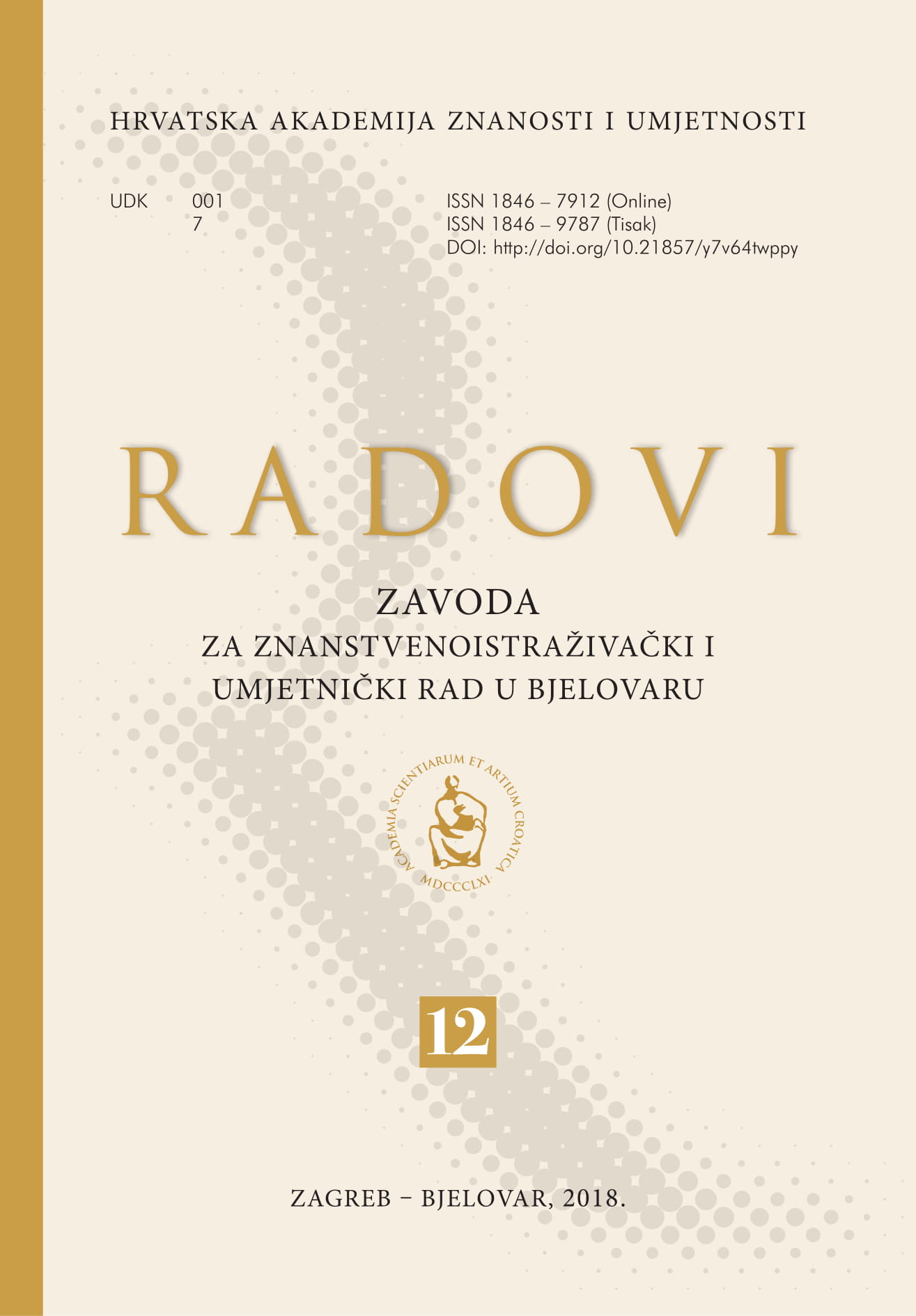Obrtnici kao temelj privrede u gradovima Bjelovarsko-bilogorske županije od ukinuća cehova do 1941. godine
Craftspeople as the Foundation of Economy in Towns of the Bjelovar-Bilogora County from the Abolishment of Guilds to 1941
Author(s): Mira Kolar-DimitrijevićSubject(s): Economic history, Local History / Microhistory, 19th Century, Pre-WW I & WW I (1900 -1919), Interwar Period (1920 - 1939), WW II and following years (1940 - 1949)
Published by: Hrvatska akademija znanosti i umjetnosti - Zavod za znanstvenoistraživački i umjetnički rad u Bjelovaru
Keywords: Bjelovar; towns surrounding Bjelovar; craftspeople; 1884 Crafts Act; 1932 Trades Act;
Summary/Abstract: In the past, craftspeople contributed to a great extent to the economic development of Bjelovar and the towns in the today small, but once rather large county, which included wider areas of Bjelovar and Križevci. Since Bjelovar was the centre of the Varaždin Military Border, which first started with the demilitarisation in 1871, Bjelovar and its accompanying towns of Koprivnica and Križevci, as well as Daruvar at the turn of the century, benefited the most from economic development. Craftspeople were through their multifold activities a part of this development in the period 1871–1941. Limited to family business, livelihood from crafts was very insecure and of brief duration. Without joining in an association, they could not have survived at all, since as of the rule of Khuen Héderváry, the attitude towards craftpeople was rather inferior in comparison with industry and tradespeople. In the period 1884–1931, Croatian craftspeople had to operate pursuant to the Crafts Act, which was infavourable to them. Subsequently, as of 1932, pursuant to the Trades Act of that year, they even had to change the name of their profession to tradespeople. They were joined within the Chamber of Trades in Zagreb and Osijek, or rather within Yugoslav Chamber of Trades. Though craftspeople from Bjelovar, Daruvar, Grubišno Polje, Garešnica and Čazma shared a similar history and opened their shops to meet the needs of the local population, it was only the town of Bjelovar that as early as in 1891 had craftspeople of nearly all professions. It thereby met the needs of other smaller fair centres, municipalities, and towns as well, except for Koprivnica and Križevci, which were included in the county until 1918, but developed parallel with Bjelovar thanks to their position on the railway line. In early capitalism, craftspeople succeeded the guilds and took over their role in between trade and industry. However, in developed monopolistic capitalism, they became a surplus, as standardised goods produced in factories were sold by wholesale. Craftspeople thus became a surplus that only educated workpower for shops and factories. The ruin of craftspeople had been cut to the very core of the regulations and dependent on executive orders of the regime.
Journal: Radovi Zavoda za znanstvenoistraživački i umjetnički rad u Bjelovaru
- Issue Year: 2018
- Issue No: 12
- Page Range: 1-37
- Page Count: 37
- Language: Croatian

